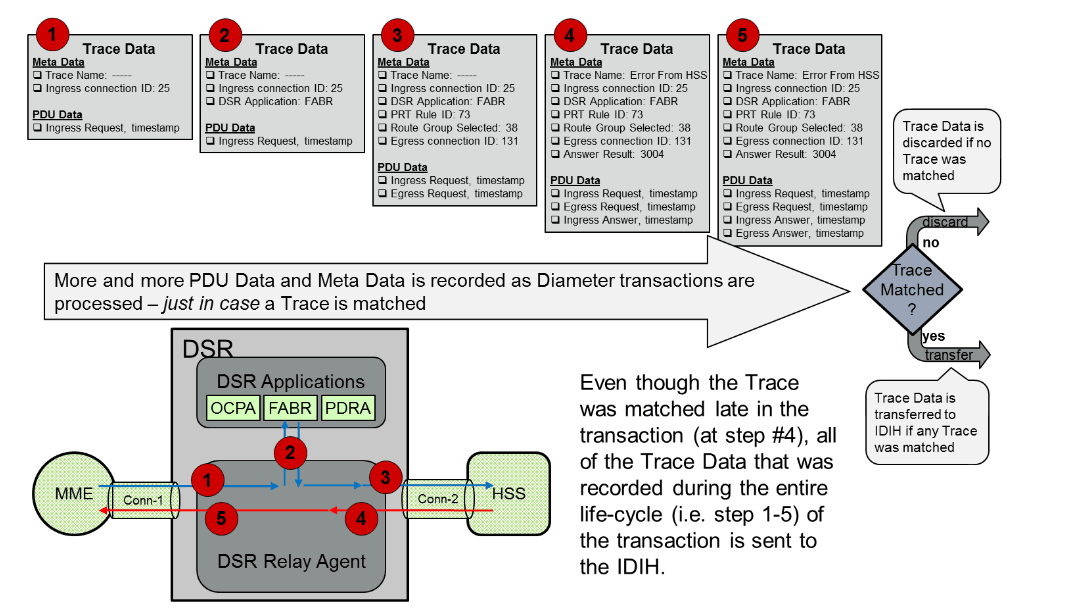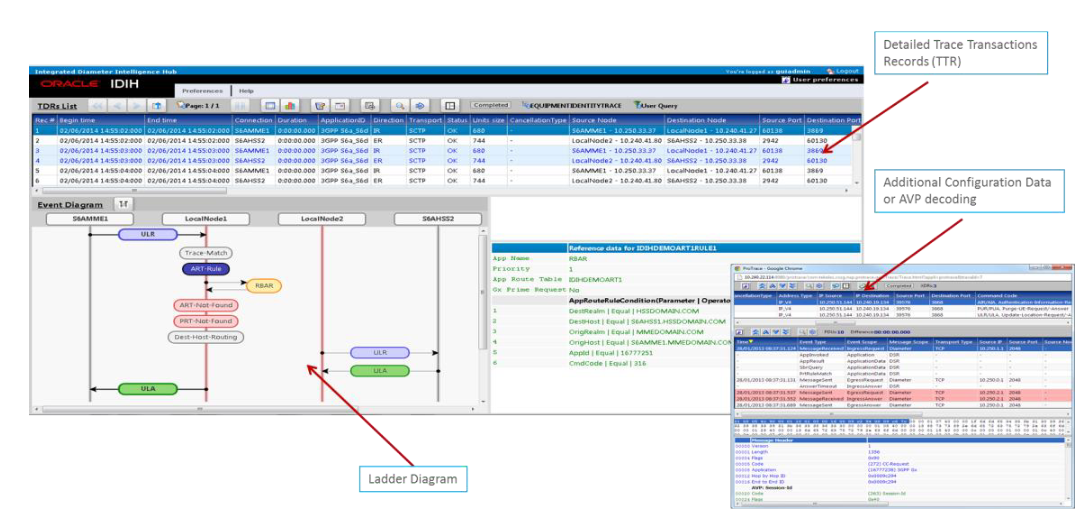2.17 Integrated Diameter Intelligence Hub (IDIH)
Figure 2-67 IDIH Trace Data

The integration of trouble shooting capabilities into the DSR product provides a high value proposition for customers to be able to troubleshoot issues that might be identified with the Diameter traffic that transits the DSR. These troubleshooting capabilities can supplement other network monitoring functions provided by the customer’s OSS and network support centers to help to quickly pinpoint the root cause of signaling issues associated with connections, peer signaling nodes, or individual subscribers.
The capabilities provided by this feature are distributed between the DA-MP(s) and an instance of Integrated DIH. The DSR plays the role of determining which messages should be captured, based on trace criteria that are created and activated by the user. The trace criteria identifies the “scope” as well as the “content”. “Scope” refers to the non-protocol-related elements (such as connections or peers) that are used to select messages for trace content evaluation. “Content” refers to the protocol-related elements (such as command codes, AVPs, so on.) that are used to refine the trace criteria. Any trace filter, regardless of scope and content, can be defined as either a “site trace” or a “network trace”. A site trace is the default behavior. A network trace results in capturing TTRs that meet the trace filter criteria on any DA-MP within the network. As request and answer messages are processed by the DSR, they are analyzed for matching any of the active trace definitions, and if so, transfer message components along with supplemental information to the IDIH called trace data. A network trace also captures the path that both the Diameter request and answer take as they traverse through multiple DA-MPs within the network. The IDIH can assemble the trace data, and present it to the user leveraging graphical visualization interfaces for additional filtering and analysis. There are three options for then exporting the trace: export the TTR in HTML, export the TTR in PCAP, or export the trace in PCAP.
Figure 2-68 IDIH Visualization GUI
